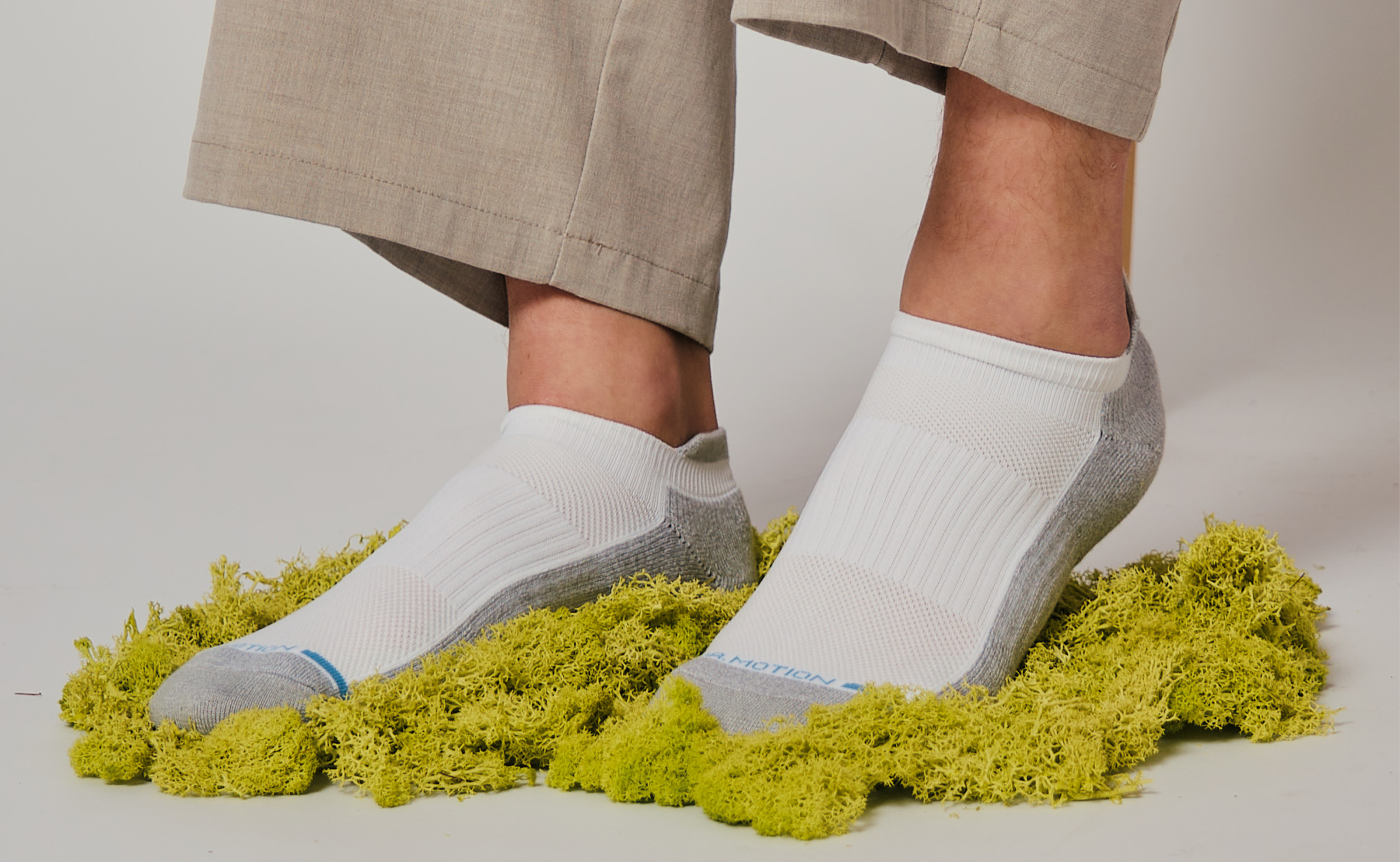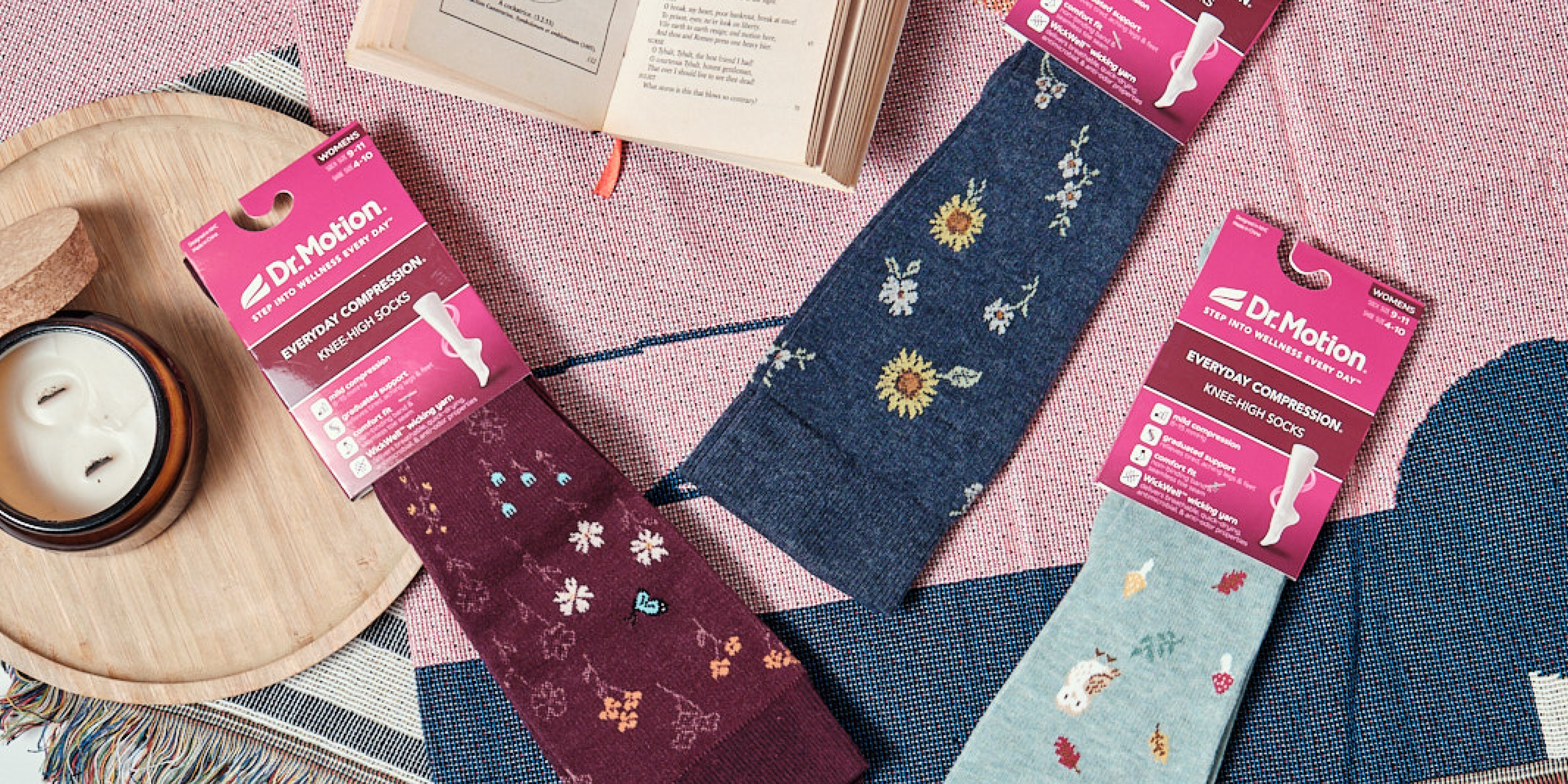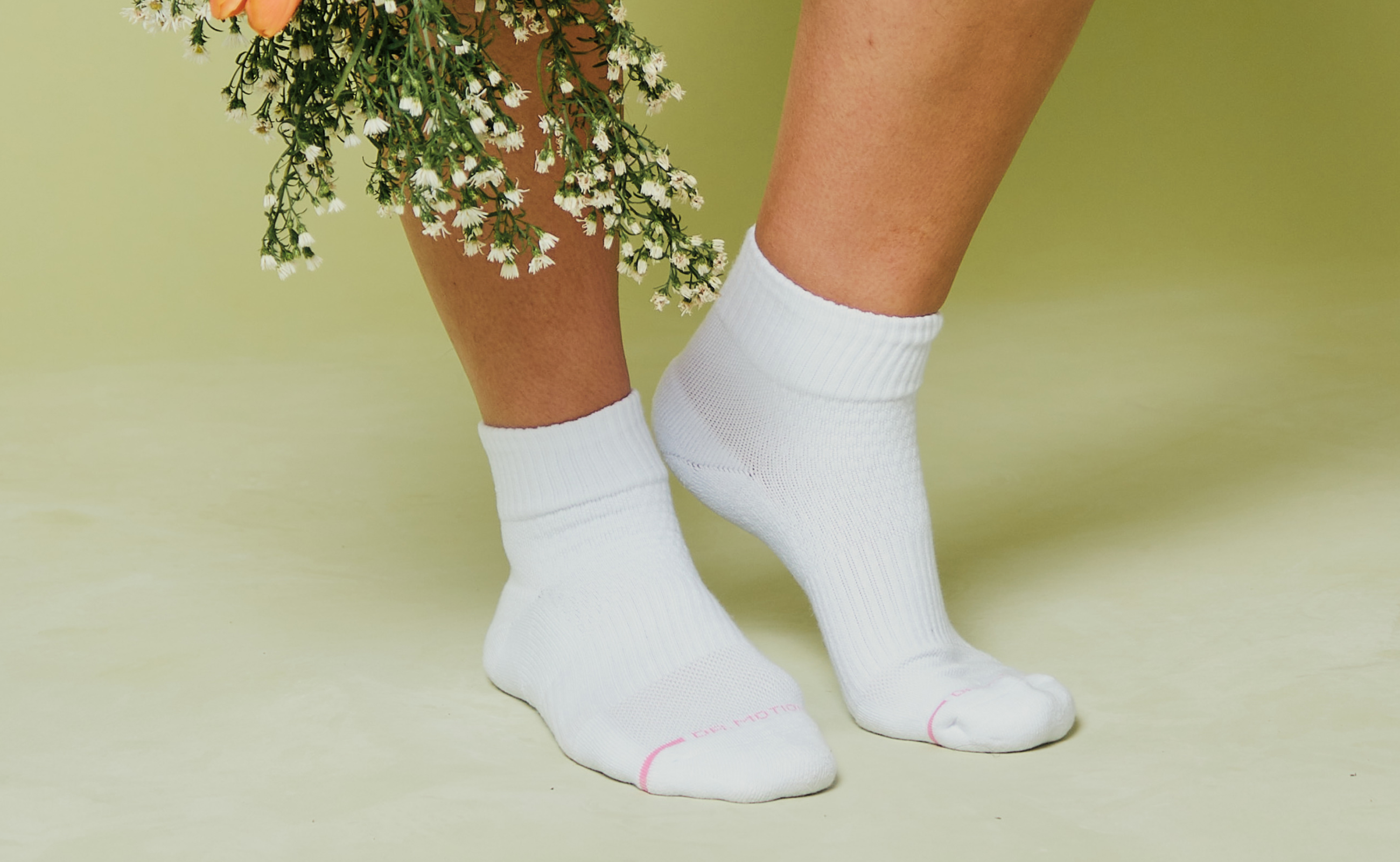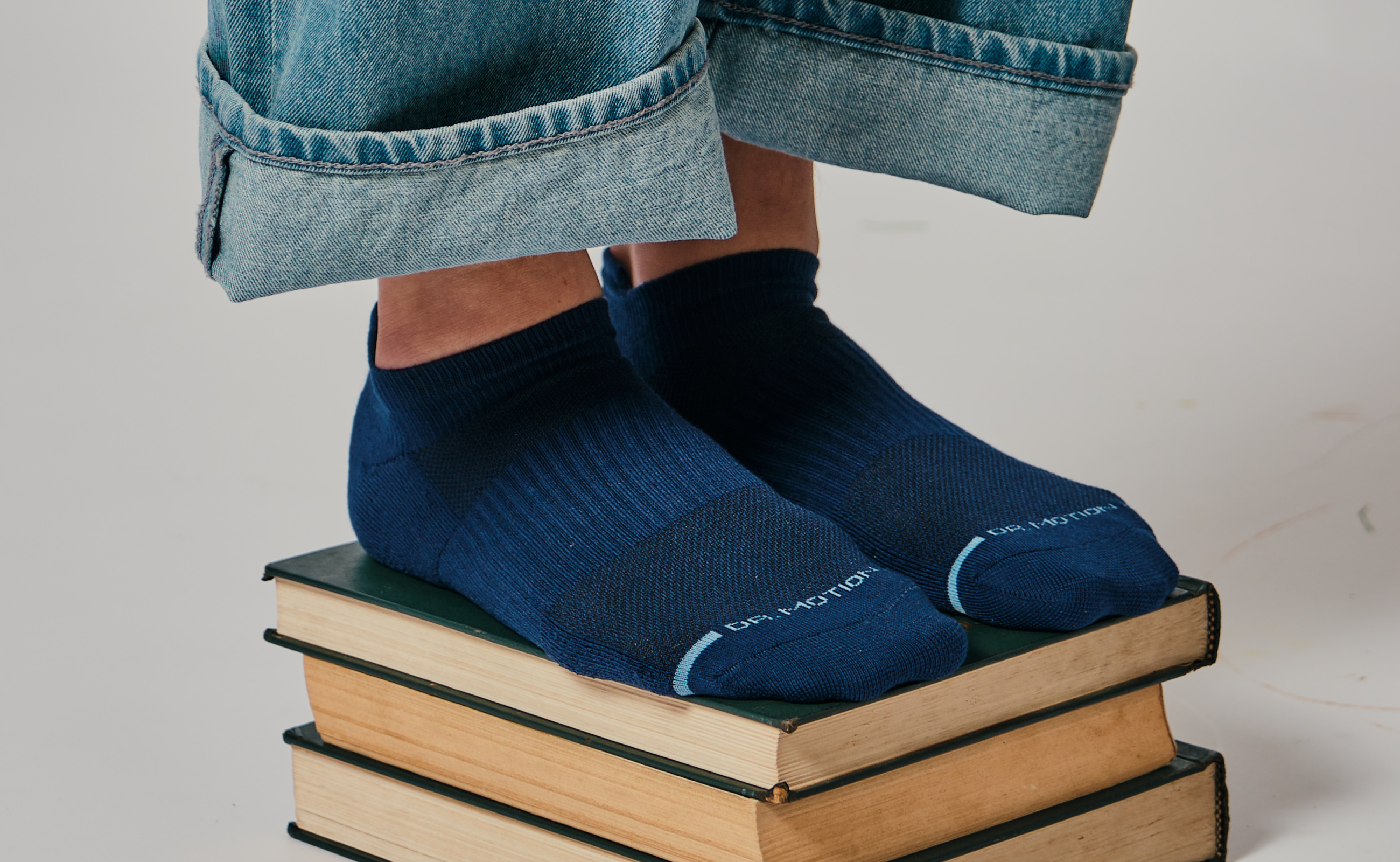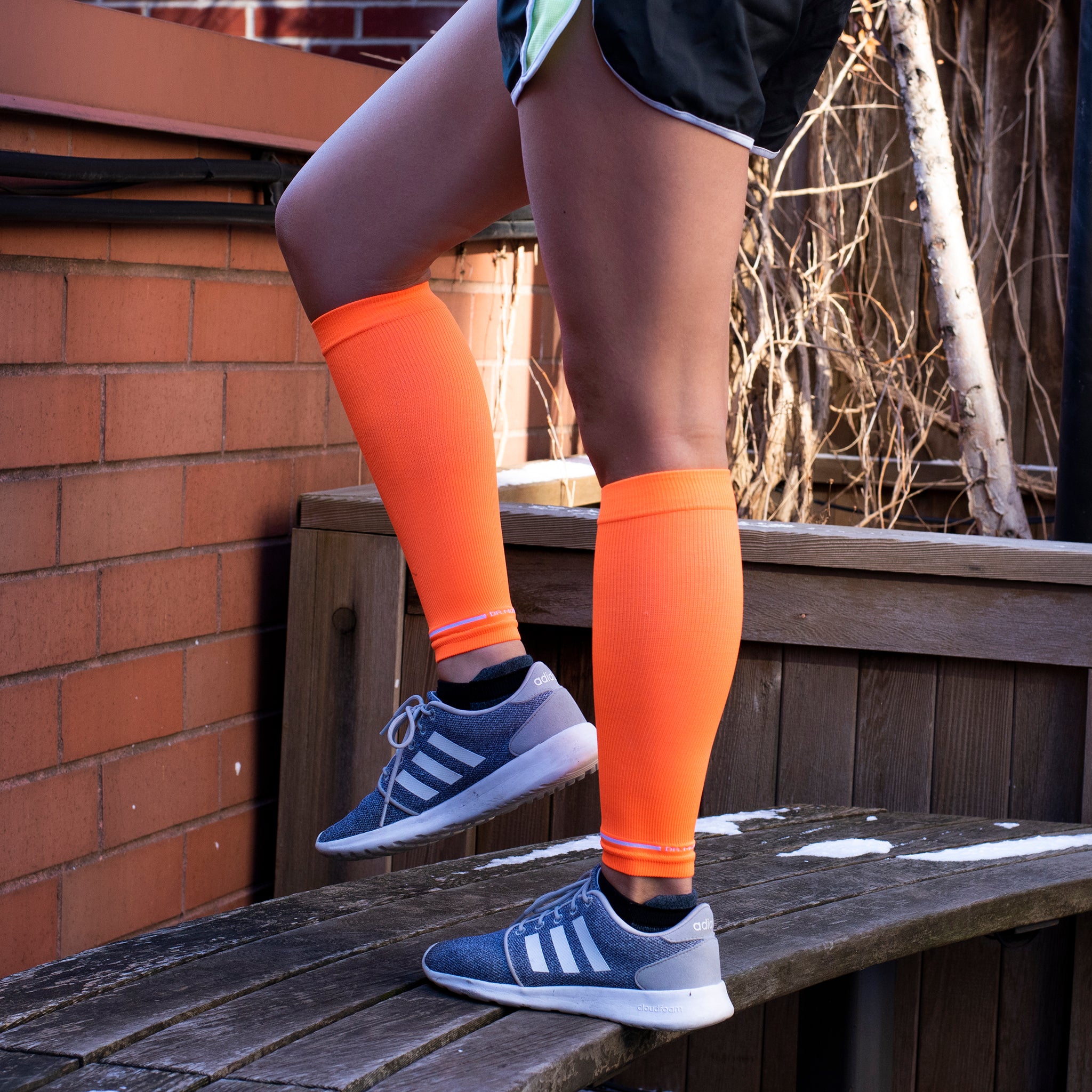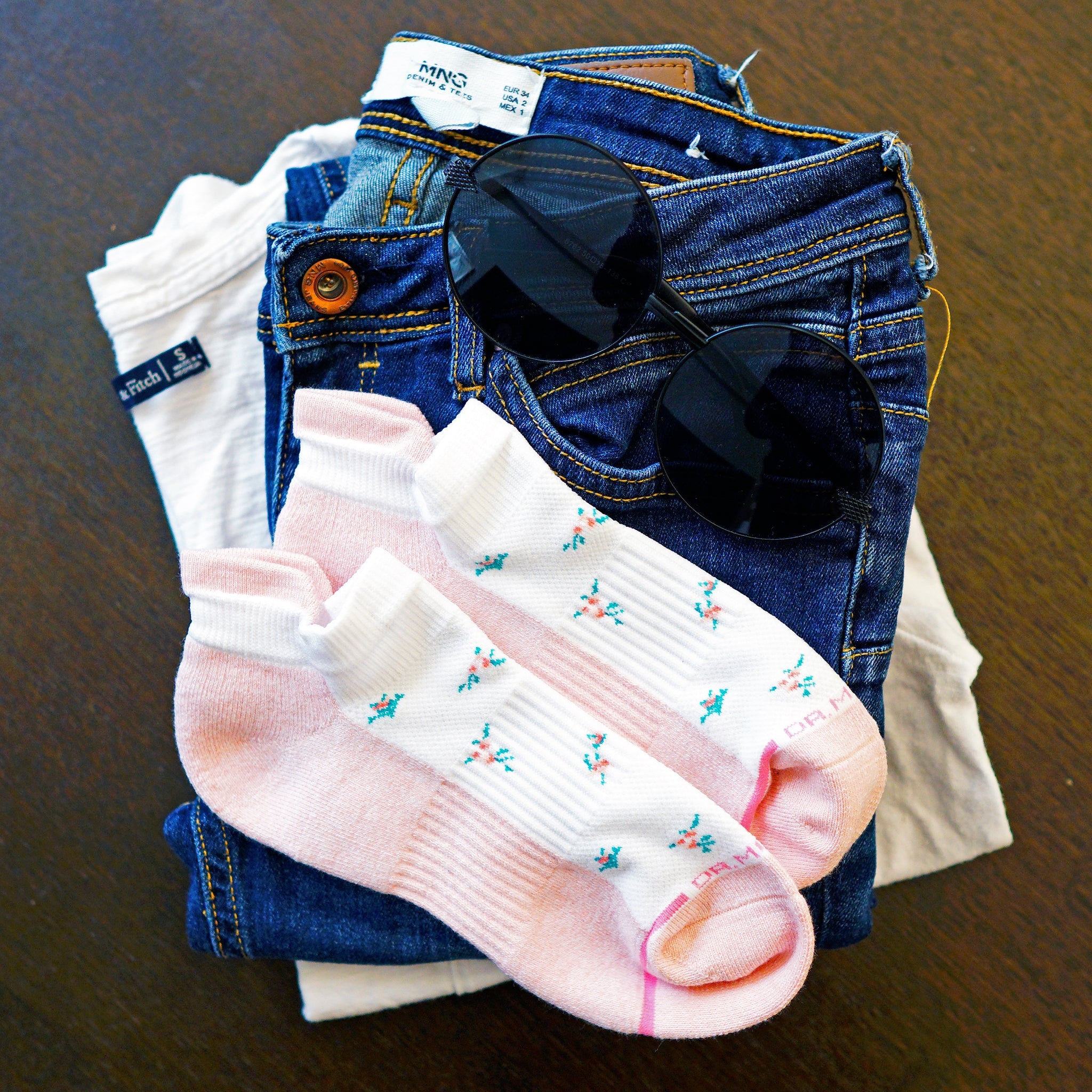3 Simple Stretches For Shin Splints For Recovery & Prevention
Shin splints can be incredibly painful. They're caused when the muscles, tendons, and bone tissue in the shins become inflamed. Shin splints affect an estimated 10.8% of the male runner population and about 16.8 percent of female runners. While they're often associated with running, they can happen after any vigorous activity. Aerobic dancers, for example, are said to have shin splint rates up to 22 percent. Fortunately, Dr. Motion has created an infographic focused on relieving shin splints. Here are 3 easy shin splint stretches and shin splints exercises that can help alleviate the pain and provide shin splint relief.

1. GASTROCNEMIUS CALF STRETCH
If you're wondering how to stretch shin splints,, the gastrocnemius calf stretch is one of the most common stretches to prevent shin splints and relieve discomfort.
-
Stand holding a wall.
-
Place one leg behind you.
-
Lean forwards.
-
Keep back leg straight and both heels on the floor.
-
Hold for 30 seconds.
-
Repeat on the other leg.
This shin splints stretching pays special attention to the back of your leg (the calf) and the superficial calf muscle (the gastrocnemius), which are known to have pain when shin splints occur.
2. Seated Ankle Dorsiflexion and Calf Stretch
For this exercise, you need to be seated on the floor. You'll need a large rope, towel, or exercise band that you can slip over your feet and hold with your hands.
-
Loop the tool around the front of one of your feet and gently pull back; it should be placed around the ball of your foot.
-
Hold the device taut for 10 seconds.
-
Then, point your toes toward the floor and hold that position for another 10 seconds. This motion is particularly for the ankle joint.
If you're wondering how to prevent shin splints when walking, this is a great shin splints stretching to do before you start walking and after you've finished to ensure your calf and ankles are warmed up and ready to move. It’s also one of the recommended exercises to prevent shin splints from recurring during daily activity.
3. ACHILLES TENDON STRETCH
When it comes to stretches for shin splints treatment, this stretch is not only important, but it'll also feel really good. As an added bonus, you don't need any fancy equipment because this stretch can be done using lots of different items, including stairs, street curbs, step stools, or even a really thick pile of books against the wall.
-
Stand with the balls of your feet on the edge of whatever tool you're using.
-
Slowly hang one heel off the step or curb until you feel a stretch in the back of your leg and ankle.
-
Hold the position for 30 seconds.
-
Repeat two to three times on each leg.
This is one of the best shin splint stretches because it targets your Achilles heel and the back of your legs, which contain a lot of muscles and tendons that can easily become inflamed if you're not used to vigorous exercise or if you fall into the percentage of runners and athletes who experience the unfortunate discomfort associated with shin splints.
Do Compression Socks Help With Shin Splints?
In addition to the 3 shin splints stretches listed above, compression socks are another way to prevent getting shin splints. The right compression socks can maximize the blood circulation in your legs, which can improve muscle efficiency and reduce the chance of you suffering from shin splints. Find out your correct compression sock size and find out firsthand how big of a difference they can make!
TAKEAWAYS:
Working out is important for your mind and body, but it can also do damage if areas of your body isn't warmed up and cooled down properly. If you're experiencing shin splints—whether you're an advanced athlete or you're just beginning your fitness journey—talk to your doctor about shin splint stretches for rehab so you can avoid the shin pain and get back to your physical activities.
- Proper warm-up and cool down shin splint exercises will help keep the muscles and tendons loose so they're less likely to become tight and inflamed.
- Compression socks can help protect the tendons, increase muscle efficiency, and maximize circulation.
- Always see your doctor if you've incurred injuries during physical activities to ensure you don't cause further harm while you're healing.
Best Compression Socks for Shin Splints
Disclaimer: This article provides information solely for educational purposes, including but not limited to text, graphics, images, and other materials contained herein. This article is not intended to substitute for professional medical advice, diagnosis, or treatment. Always seek the advice of your physician or another qualified healthcare provider with any questions you may have regarding a medical condition.



